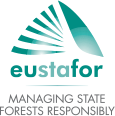New UNECE/FAO Report explains the complexity of forest ownership and tenure in the UNECE region
 Forests cover 42 percent of the UNECE region, which embraces countries of North America, Europe, the Caucasus and Central Asia. Forests are not only the dominant type of land cover but also a critical element for ecosystem maintenance and sustainability. While studies and reports on the region’s forests undertaken so far provided extensive information on their state and functions in general, there is little information about their owners and managers.
Forests cover 42 percent of the UNECE region, which embraces countries of North America, Europe, the Caucasus and Central Asia. Forests are not only the dominant type of land cover but also a critical element for ecosystem maintenance and sustainability. While studies and reports on the region’s forests undertaken so far provided extensive information on their state and functions in general, there is little information about their owners and managers.
To address this gap and to learn more about forest ownership, how it is changing, and the implications for management and policy, the UNECE and FAO, in cooperation with the COST Action FACESMAP as well as with support of the European forest owners’ organizations developed a study on the “State of Forest Ownership in the UNECE Region”, based on a survey of national data and expert opinion.
Although over 80 percent of the UNECE region’s forests are publicly owned, the region is characterized by the most diverse ownership structures in the world. However, apart from Canada and the Russian Federation which share almost two thirds of the UNECE region’s forests, in the remaining part of the region the shares of public and private forests are almost equal. Within the two broadest categories of ownership, public and private, forests are owned and managed through a variety of tenure and institutional arrangements. The pan-European region adds to this complex picture even more than the others.
The study presents information gathered on forest policies and forest management under different ownerships and describes different public and private forest owners along with their perspectives on forest management.
At the seminar held in European Forestry House, Brussels, on 14 December 2018, the authors of the study presented an analysis of forest coverage, forest policies and forest management under different ownership schemes. The main results of the study, including the thematic inter-active database, guided discussion of the status, trends, opportunities and challenges of forest ownership in the region, with the representatives of European Institutions, representatives of forest owners’ organizations and the Brussels-based stakeholders.
“Ownership may appear to be a relatively straightforward concept, but when we examine it we find it is quite complex, entailing different rights, responsibilities, organizational procedures and understandings that vary considerably depending on country and context. These differences, in turn, profoundly affect the way forests are managed and thereby the benefits that can be derived from them” explained Prof. Anna Lawrence, the coordinating lead author of the study.
“Forest ownership structure in the pan-European region is very complex and requires proper explanation and understanding. This is particularly important in the case of state owned forests since the general public expects to be able to continuously benefit from multiple goods and services provided by forests. The report explains this complex system and allows to understand who can use what resource, for how long and under what conditions,” said Mr. Piotr Borkowski, Executive Director, European State Forest Association (EUSTAFOR).
“One of the main challenges faced by European private ownership today is fragmentation and parcelization. This is confirmed by the UNECE/FAO report which brings very useful insights to better understand this situation. In this context, when dealing with forest-related issues, the EU policy framework should always keep in mind forest owners’ possibilities and motivations when managing their forests, so that they can best make use of their strengths. Overall, acknowledgement of property rights plays a key role in fostering the active and sustainable management of forests,” commented Ms. Fanny-Pomme Langue, Secretary General, Confederation of European Forest Owners (CEPF).
“Public forest ownership is very diverse and, among other types, includes communal forest ownership. The communal, sometimes also called municipal, form of ownership is characterized by significant impact of forest management on the welfare of local communities, both urban and rural. Therefore, it requires proper recognition among other ownership types,” added Mr. Maximilian Hauck from the European Federation of Municipal and Local Community Forests (FECOF).
MEDIA CONTACT:
ROMAN MICHALAK
UNECE/FAO Forestry and Timber Section
United Nations Economic Commission for Europe
Office S-433-1, Palais des Nations
8-14 Avenue de la Paix
CH – 1211 Geneva 10, Switzerland
Email: roman.michalak@un.org
Tel: +41 22 917 2879
Piotr BORKOWSKI
European State Forest Owners Association (EUSTAFOR)
office@eustafor.eu
www.eustafor.eu
Fanny-Pomme LANGUE
Confederation of European Forest Owners (CEPF)
office@cepf-eu.org
www.cepf-eu.org
Maximilian HAUCK
European Federation of Municipal and Local Community Forests (FECOF)
info@fecof.eu
www.fecof.eu
Published 14/12/2018
Mr. Piotr Borkowski
Executive Director
- piotr.borkowski@eustafor.eu
- +32 (0) 474 989 319

